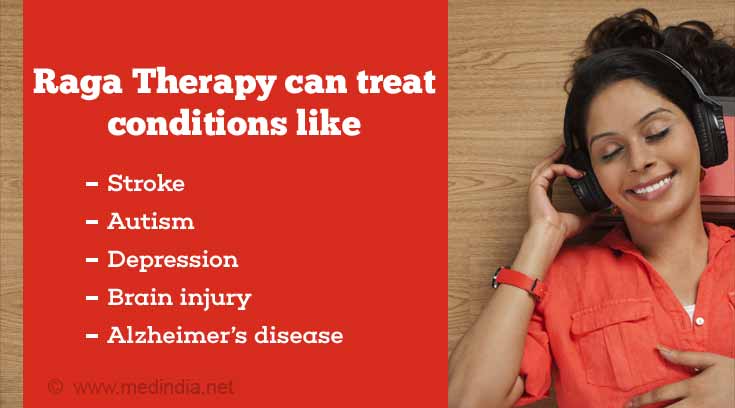Ragas that Heal
Hindu philosophy gives us an insight into the “feeling” nature of music and how deeply the human spirit affects and is affected by the outcome of a performance. Shyamali Sharma, a performing sitar artist and music therapist of many years says, “I can certainly attest to the fact that your personal feelings are projected on the audience tremendously, so much so that if you are upset, you should not play because everyone listening to your performance will be affected by your emotion. If you are overwhelmed with happiness, so will they be.”
There are 72 raagas, which are known as the Melakarta ragas (Parant raagas) from which other ragas known as the Janya ragas are obtained. Neural research proves that 72 raagas can control 72 nerves in the human body. Singing or performing a Raga, when bound to its specifications (lakshanas) and with purity in pitch (swara shuddi) gives the performer complete control on the corresponding nerve. Ragas Ahirbhairav and Todi are prescribed for patients suffering from hypertension. Carnatic ragas like Punnagavarali and Sahana are useful to calm the mind and control anger.

Ragas used in Music Therapy
| Raga | Treatment |
| Todi, Bhupali, Ahir Bhairav | Provides relief from cold and headache, high blood pressure |
| Shivaranjani | Treats memory problems |
| Bhairavi | Provides relief from Sinus, cold, phlegm, toothache |
| Chandrakauns | Treatment of heart ailments and diabetes |
| Darbari Kanara | Eases tension and provides relaxation |
| Bihag and Bahar | For sound, sonorous sleep |
| Darbari | Relief from tension |
| Malkauns, Asavari | Cures low blood pressure |
| Tilak-kamod, Hansdhwani, Kalavati, Durga | Easing tension |
Table 1: Source: International Journal of Innovation, Management and Technology, Vol. 2, No. 1, February, 2011 ISSN: 2010-024856
Hindustani and Carnatic classical musical considers a Raga as depicting a specific mood. An appropriate mood has to be evoked in the listener’s mind before initiating musical treatment. For example, Kafi Raga evokes a humid, cool, soothing and deep mood while Raga Pooriya Dhanasri evokes a sweet, deep, heavy, cloudy and stable state of mind. Raga Mishra Mand has a very pleasing, refreshing, light and sweet touch while Bageshwari arouses a feeling of stability, depth and calmness.
Ragas do heal when rendered properly, at the right pitch (saptak), with the true vaadis and samvaadis brought forth, and at the correct prahar (time). Even a single swar/note has immense strength. Stuti, a sitar player in the US is suffering from a heart condition. She says, “I mainly use my sitar for meditation as I find the sound of the instrument bringing healing to me. I take the sitar to parks and beaches out in hot or cold weather as I need the serenity of its sound because of my heart condition.”
Another musician of the Jaipur gharana who recently bought a rudra veena writes, “I have noticed great cardiac as well as psychological benefits from playing my recently purchased Indian classical instrument. I'm impressed by an often overlooked aspect (healing aspect) of Indian classical music. True intelligence resides in the heart.”





